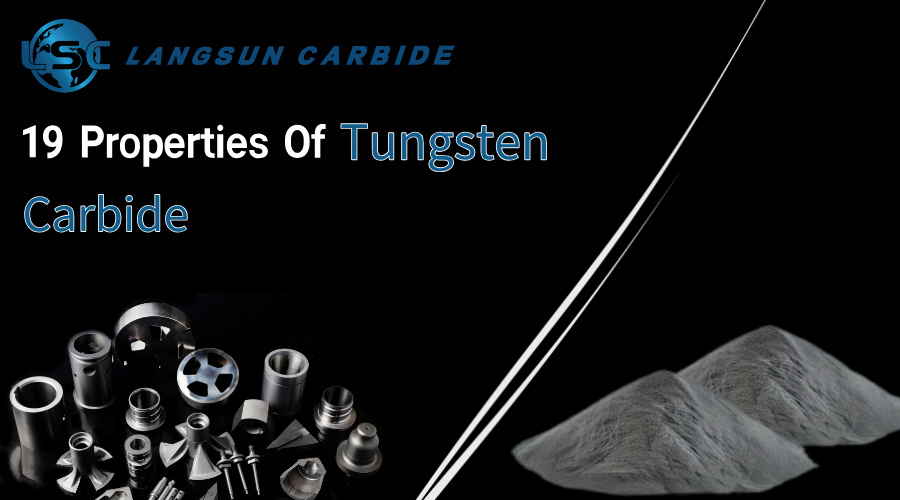Tungsten carbide (WC) is a highly valued material in numerous industries due to its impressive combination of properties. This blog post will explore 19 key properties of tungsten carbide that contribute to its widespread use and recognition.
Tungsten carbide boasts an impressive hardness on the Mohs scale, ranking around 8.5 to 9. This hardness is second only to diamond, making it ideal for cutting tools and abrasion-resistant components.
With a melting point of approximately 2,870°C (5,198°F), tungsten carbide remains stable at high temperatures, making it suitable for applications requiring extreme heat resistance.
The density of tungsten carbide is about 15.7 g/cm³, which is significantly higher than most metals. This property makes it a perfect choice for applications where weight and compactness are crucial.
Tungsten carbide exhibits extraordinary compressive strength, making it capable of withstanding high pressures without deformation or failure. It is commonly used in industrial machinery and tooling.
One of the standout properties of tungsten carbide is its exceptional wear resistance. This makes it an ideal material for parts that experience high friction and need to maintain their integrity over time.
Tungsten carbide has good thermal conductivity, enabling efficient heat transfer. This property is beneficial in applications requiring rapid dissipation or uniform heat distribution.
Although not a primary electrical conductor, tungsten carbide can conduct electricity, making it suitable for certain electrical and electronic applications.
Tungsten carbide is resistant to a wide range of corrosive environments, including acids and alkalis. This property enhances its lifespan and reliability in harsh conditions.
Tungsten carbide's rigidity is another key property that contributes to its favorable use in precision machinery and cutting tools, ensuring minimal deformation under load.
The chemical stability of tungsten carbide makes it suitable for use in environments where exposure to reactive substances is a concern.

While tungsten carbide is hard, it also has notable fracture toughness, meaning it can resist the propagation of cracks under stress, enhancing its durability.
The coefficient of thermal expansion for tungsten carbide is relatively low, allowing it to maintain its size and shape under temperature fluctuations.
Despite its hardness, tungsten carbide can be machined and shaped using specialized equipment like diamond-tipped tools, allowing for precise fabrication of components.
While being extremely hard, tungsten carbide can be brittle under certain conditions. This brittleness necessitates careful handling and engineering considerations in design and application.
Tungsten carbide's impact resistance, though lower than steel, is still sufficient for many applications where shock absorption is critical.
Tungsten carbide is recyclable. It can be reclaimed and reused, making it an environmentally friendly material choice in many industrial processes.
Tungsten carbide itself is non-magnetic, but when combined with certain metals, it can exhibit magnetic properties, which could be advantageous in specific applications.
Tungsten carbide is generally biocompatible and is used in medical applications, particularly in surgical instruments and biomedical implants.
Tungsten carbide maintains excellent dimensional stability, ensuring consistency and reliability in precision applications such as molds, dies, and high-precision tooling.
Tungsten carbide's remarkable properties make it an indispensable material across various industries. Its hardness, wear resistance, thermal and electrical conductivities, and chemical stability are just a few of the qualities that contribute to its widespread use. Understanding these 19 key properties helps appreciate why tungsten carbide is a preferred choice for demanding applications.